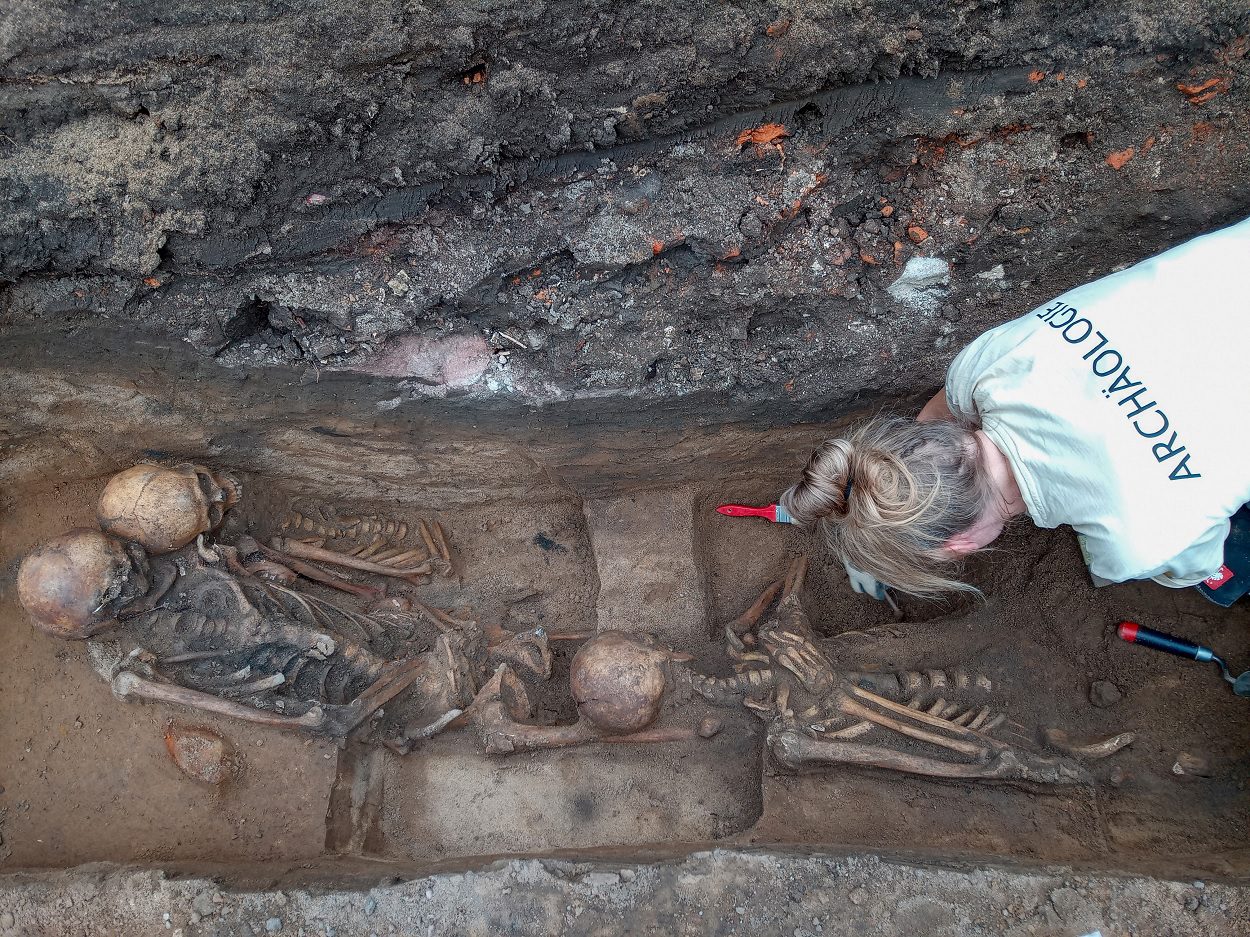Archaeologists from IN TERRA VERITAS have uncovered mass plague pits containing the remains of over 1,000 burials in southern Germany.
The pits were discovered prior to construction works in the city of Nuremberg, revealing a total of 8 mass pits that date from the 15th and 17th centuries.
According to a press announcement by IN TERRA VERITAS, the pits contain the remains of adults, children, and infants, who likely died in mass due to outbreaks of the Black Death in Nuremberg between 1533 and 1634.
The Black Death was a bubonic plague pandemic caused by the bacterium Yersinia pestis and spread by fleas. Symptoms of the plague include a fever ranging from 38 to 41 °C (100 to 106 °F), headaches, joint pain, nausea, vomiting, and an overall sense of discomfort, resulting in a death rate of approximately 80% if left untreated.
During the 16th and 17th century, the plague outbreaks left graveyards in Nuremberg at capacity, so local authorities resorted to burying victims on mass in pits nearby or adjacent to churches.
The recently discovered plague pits are in close proximity to the St. Sebastian cemetery, which stands as the largest scientifically excavated mass burial site in Germany and possibly across all of Europe.

Mr. Florian Melzer from IN TERRA VERITAS, said: “The skeletons are in very good shape for examination despite the destruction that occurred (due to WW2 bomb damage).”
An anthropological analysis will be able to understand the general health and life circumstances during this period, including different kinds of cancer, genetic mutations, status of the teeth, and the death rates by age and gender.
Ms. Melanie Langbein from the Department for heritage conservation, City of Nuremberg, said: “A discovery like that has never happened before and quite honestly no one had thought this to be possible. The site is of enormous importance to the city of Nuremberg and we work together in our attempt to get all information possible”.
Header Image Credit : IN TERRA VERITAS
Sources : IN TERRA VERITAS





